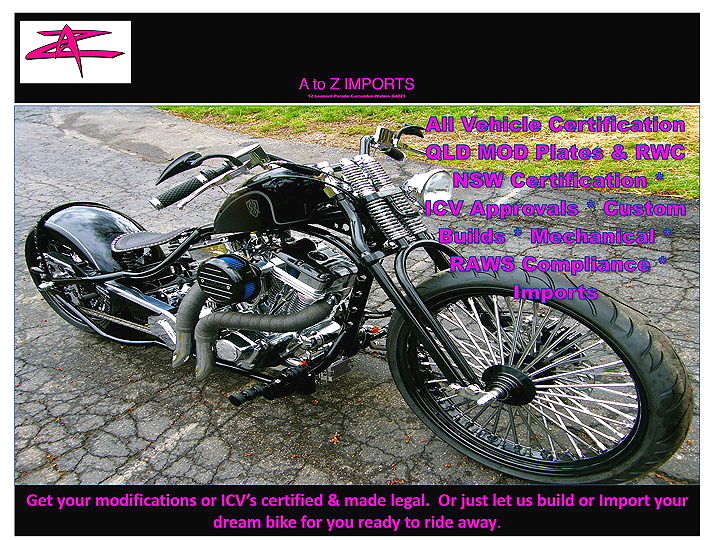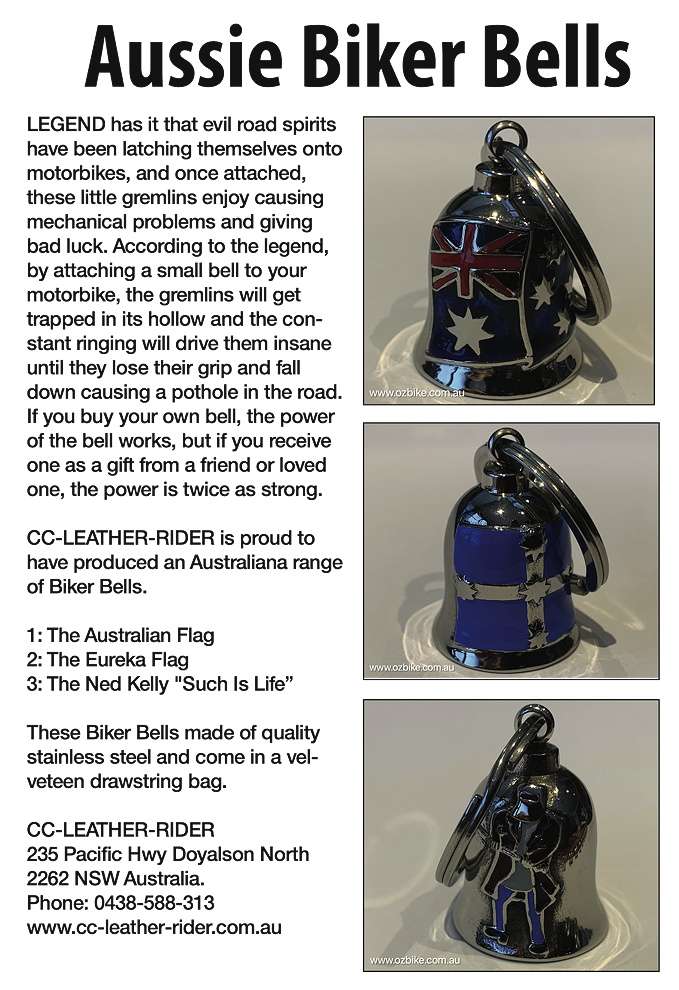Rockin’ Roller #2
If in doubt…chop it!

THE FIRST THING to do with this bike was to get the lines right. I learned from the Triumph build that if you get the lines right, the rest of the build is just adding things that don’t fuck it up! Well, almost. But the point is a bike’s lines are important.
There are many factors involved in getting a bike sitting ‘right’, including wheel and tyre size, frame type, fork length, stretch and rake. Adjusting one will obviously affect the rest. So before we stuffed around adjusting the big stuff, it was important that I had on the bike the exact wheel and tyre combination I’d be using.
I wanted to rake the Paughco wishbone frame just a little bit to get rid of that ‘stumpy’ look that these frames can sometimes produce. You know, like the bike’s been ridden straight into a brick wall and had the front wheel pushed back? I also had the two-inch-over springer to think about, and maybe raking it would make the bottom frame rail sit parallel to the ground. In my opinion there’s not much uglier than a bottom frame rail pointing skywards; except maybe one pointing groundwards I guess.
Putting a ‘perfect’ front chopper wheel together—a skinny 21-inch brakeless spoked wheel—would at first seem relatively simple. I mean, most stock Harleys run them. But I wanted it ’70s style which meant it had to be skinnier than skinny, and cooler than cool. Finding the right rim/hub/spoke combination was quite difficult.
I got an alloy hub from the USA. It’s a custom-made, 40-spoke dirt-tracker hub. It was made to accept a standard bearing, but this was for a smaller axle and wouldn’t take the one-inch Harley-type axle. So I had the axle machined to fit the bearing and hub.

Zen and the art of polishing. I got polisher’s tan but it came up well. No point having a beautiful brakeless wheel unless the hub glistens in the sun as it spins.
I wanted a 21-inch alloy rim, a very common thing on dirt-bikes. Even nicer, they come in 1.85-inch widths for that extra slim look, and being alloy, they polish up well. I ordered a skinny alloy rim blank from British Spares in New Zealand (www.britishspares.com). Then I had Chivo’s drill the nipples on the rim blank and make a set of custom stainless steel spokes. This ‘simple’ chopper wheel is all quality!

After loosely spoking the wheel correctly myself, my nameless machinist friend re-spoked it incorrectly, but thankfully didn’t bend the spokes permanently. Kansas Charley is the man with the dial indicator and the patience, so after much unnecessary interference from me, he spoked the wheel correctly before truing it.
It was time to rake!
It was time to rake! First we cut the neck gusset from the bottom up, before cutting a little relief section into the top. Then some heat was applied so we could squeeze the fork cups in. It was a particularly tight fit, even though the fork cups had been in the freezer for a while.
While hammering the cups in, things got a little out of hand and the neck ended up on the floor. Oh well. It was easier to bang the cups in from there.

With cups in, the neck was welded back on. Daz was just tacking things in place with the MIG at this stage, apparently messily, but still infinitely better than I could do having no welder or welding experience.
With the front wheel sorted and in the two-inch-over springer, the rear was simple—a stock 16-inch Harley rim with a five-inch tyre.
At this stage the idea was to put the forks in so we could see how the bike sat. Of course, the front and back wheels were set up with exactly what I was going to run so we would get an accurate indication. After much standing back and banging it with a hammer, we were happy that it was in the right place, and happy that it was sitting in the correct vertical axis.
I cut a piece of flat bar and shaped it to fit across the bottom of the gusset. Daz then tacked it on along the underside of the original bar for extra strength. An elongated ‘V’ piece eventually filled the gap.
Then it was off to a ‘real’ welder, Geoff from Scruffy Mufflers in Camperdown, who welded it all up nice and strong.
In the cold light of day… it still looked like it sat slightly too high…
I brought the whole shebang home, threw the motor in, set it up and stared at it. In the cold light of day I couldn’t deny that it still looked like it sat slightly too high for my liking. Some might say ‘close enough’ but I’d rather get it right than worry about it further down the track. I didn’t want to rake the front any more as it would start to look like a ‘long’ bike, but I was staring down the barrel of having to buy a shorter front end—not fun—when I came up with a solution. I switched the rockers on the springer and ran them upside down, reducing the front-end by just over an inch, and bringing the bottom frame rail down parallel with the ground. I can’t see any particular problem with doing this but if someone can give me a reason why not to, let me know.
(Incidentally, during my last build-up, one reader wrote a letter swearing black-and-blue that my tyre would melt due to hot exhaust gases coming straight out of my drag pipes and onto it. Well, 10,000 km later and the tyre has never been hotter than ‘mildly warm’. But I appreciate opinions nonetheless).

Sick of wheeling the bike around on a lift, I bought a standard aftermarket sidestand. Since I’m not running forward controls, I made an alloy plate to bolt the stand to. The plate hasn’t been tidied up at all, so it’s a bit fugly at the moment. The bike also sits way too straight up and down so I’ll need to adjust it considerably once things get further down the track.
These seat spring bungs were made by some high-school students, Paul and Milot, in Mr Alevizos’ Year 11 metalwork class. Thanks guys! They’ve got five lathes in the one room, and only a few of the students show any interest in learning to use them. The boys made these bungs extra long so I could cut them down myself to suit.

Meanwhile, at the school of hard knocks, Professor Scruffy demonstrates how to weld your fingers to a seat bung. Note the spark narrowly missing the left eye before bouncing off the professor’s forehead. As Mr Scruffy says, “Students, that’s why you shut your fucking eyes.”
Voila! Eventually I got it sitting ‘right’ and I’m very happy with how it looks. I was glad I didn’t have to hunt for a new springer, and I think the end result is a bike that still isn’t ‘long’, but definitely isn’t ‘stumpy’ either.
Now that the bike sits right, it’s time to get one of the most important things sorted—the drive-train alignment. Since it’s a Harley rather than a unit Trumpy, I’m looking forward to it being much easier, in terms of chain clearance at least!
words & pics by Wasko.


